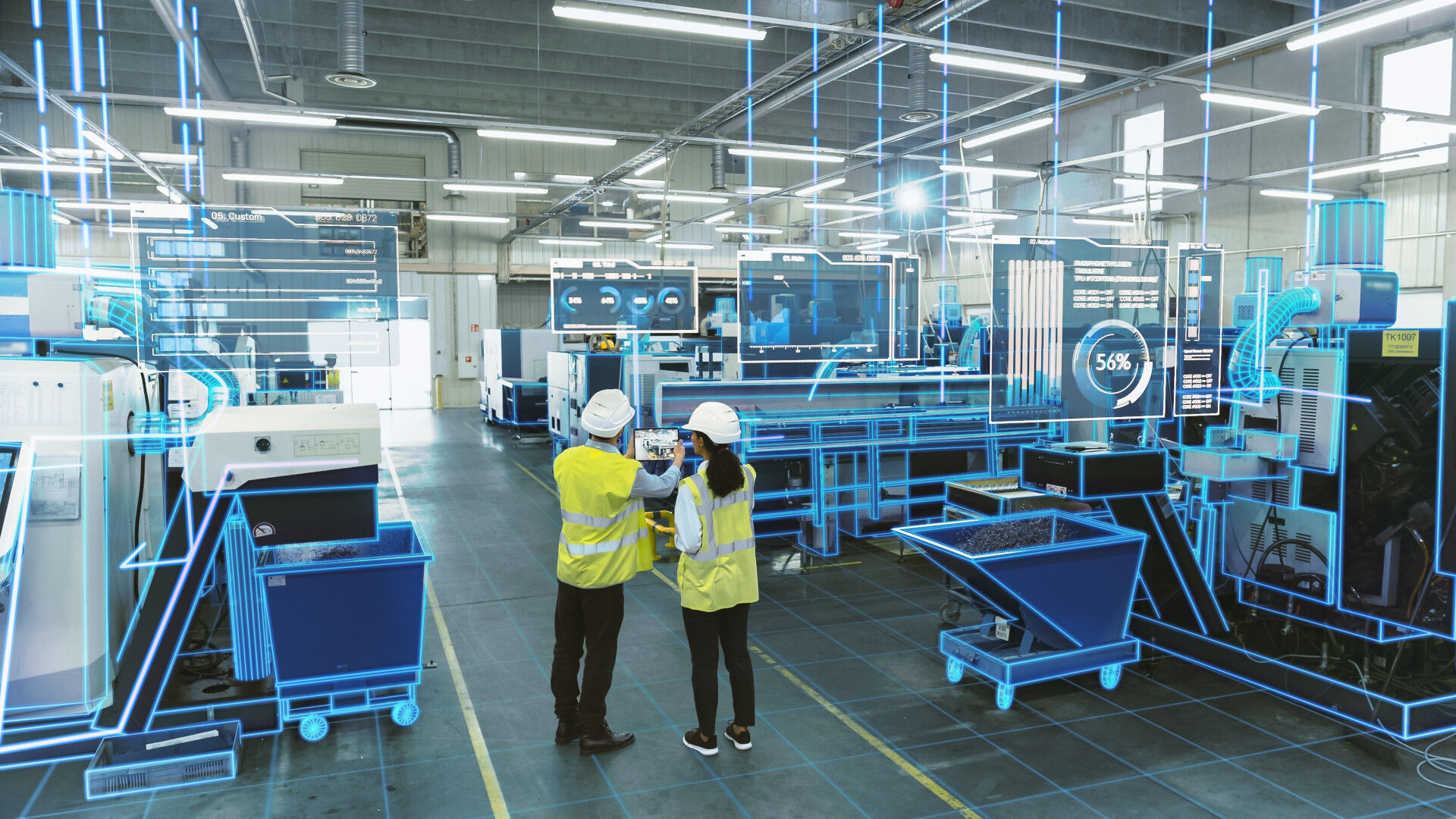What Is the New Skillset Evolution?
Work is changing. It always has. Each major shift brings the same fear that machines will take over. But history shows the opposite. Every new tool creates new roles, and those who learn how to use them move forward.
Industry 4.0 followed the same path, automating some work while creating more valuable jobs and expanding the economy. The same is true now with Industry 5.0, which will reward those who focus on real skills. Not theory. Not hype.
The smart manufacturing workplace of the future will reward those who learn new tools, understand connected systems and build what truly matters. That is the way forward.

What’s Required for Industry 5.0 Transformation?
Adopting Industry 5.0 is not only about new tools; it’s about new roles and new expectations. This shift demands a mix of digital skills, real-time decision-making and human adaptability. For most workers, this means moving past routine tasks and stepping into roles that call for critical thinking and sharper skills.
The five areas with the most immediate impact on jobs are:
Data analysis
AI prompt writing
5G and 6G network deployment
Ongoing technical training
Enterprise digital literacy
These five areas will guide how companies make decisions and stay competitive. They influence everything from AI and data use to training, network design and the tools people rely on every day. Other technologies like robotics, blockchain and quantum computing are still out of reach for most. As these five areas mature, they'll bring new tools and job types that demand both hands-on work and advanced understanding. Those who learn early will be ready to lead. This is why reskilling is so critical.
Industry 5.0 transformation faces real obstacles. Many manufacturers lack clear frameworks, skilled workers and access to new technology. Adoption is slow, and implementation often stalls without structure.
The answer lies in preparation and partnership. Technology providers need to work closely with manufacturers to plan, upskill teams and build systems that are ready for scale.
Figure 1: Obstacles to Industry 5.0 Transformation
Adoption Challenges for Industry 5.0
Because Industry 5.0 lacks universally accepted protocols and frameworks, industry associations and regulators like the ISO, IEC and IEEE are developing and promoting global Industry 5.0 standards. The absence of a well-defined framework results in resistance to adoption among manufacturers. Many manufacturers are still catching up with Industry 4.0, using outdated systems and manual spreadsheets to run their paint lines. Limited funding for new ideas slows progress and adds confusion, especially as Industry 5.0 goals start to connect with environmental, social and governance priorities.
Implementation Challenges
Implementing Industry 5.0 begins with funding. As enterprises look to move projects from a CapEx funding model to an OpEx funding model, they are moving away from large, upfront budgets to approaches that release funds in smaller phases. The result is an iterative funding model in which projects without clear returns are stopped early, so resources can be shifted to efforts that show positive ROI.
As new systems are introduced, security becomes a concern across the entire operation. Projects launched outside the CIO’s oversight, often through shadow IT, create hidden risks that can expose critical systems to cyber threats. Surprisingly, even with an advanced cyber program, threats can emerge from seemingly innocuous sources, such as an assembly line Wi-Fi gateway connected to internal manufacturing VLANs put in place to help the logistics team monitor parts.
Many companies lack the talent to run new systems at scale. External partners can close this gap by supporting both early pilots and long-term operations. Choosing a proven vendor can be the difference between stalled pilots and successful, full-scale deployment.
Regulations continue to evolve quickly, and many manufacturers struggle to keep pace. Companies with dedicated governance teams manage this pressure best. These teams track new requirements, adjust internal policies, and guide the business through constant change. By aligning with established industry standards, they can strengthen policies on cybersecurity, data privacy and workforce management.
Adoption and implementation challenges show up in nearly every effort to adopt Industry 5.0. They can be addressed by steady and agile leadership that learns how to invest, how to upskill their staff and how to adapt to regulatory changes.
Figure 2: Preparing for Industry 5.0: How Leaders Can Stay Ready for What’s Next
What Can I Do to Prepare?
Leaders can prepare for Industry 5.0 by keeping strategies flexible, engaging clients early, tracking new regulations and partnering with innovators. Staying adaptable and proactive will help them turn new technologies into real business advantage.
Why This Matters
Figure 3: How Providers and Manufacturers Can Prepare for Industry 5.0
Industry 5.0 is not about replacing people; it’s about bringing people back into the center of work. The goal is to use machines and data to support workers, not sideline them. But this shift is not automatic! It takes clear thinking, smart partnerships and steady investment in skills.
Firms that depend only on internal teams will fall behind. Innovators partner with system integrators who live and breathe technology. Let them manage the pace of change. Manufacturers should focus on building strong products, leading their teams and staying true to what matters most. That’s how to make this revolution work in your favor.
How Can ISG Help You?
ISG specializes in helping businesses adopt new technologies such as Industrial IoT, Generative AI, and Digital Twins. With our expert consulting services, we provide tailored strategies with a robust vendor sourcing approach. We guide your organization through the complexities of Industry 4.0/5.0 governance, digital transformation, and sustainable practices, ensuring you stay ahead in the competitive landscape.
